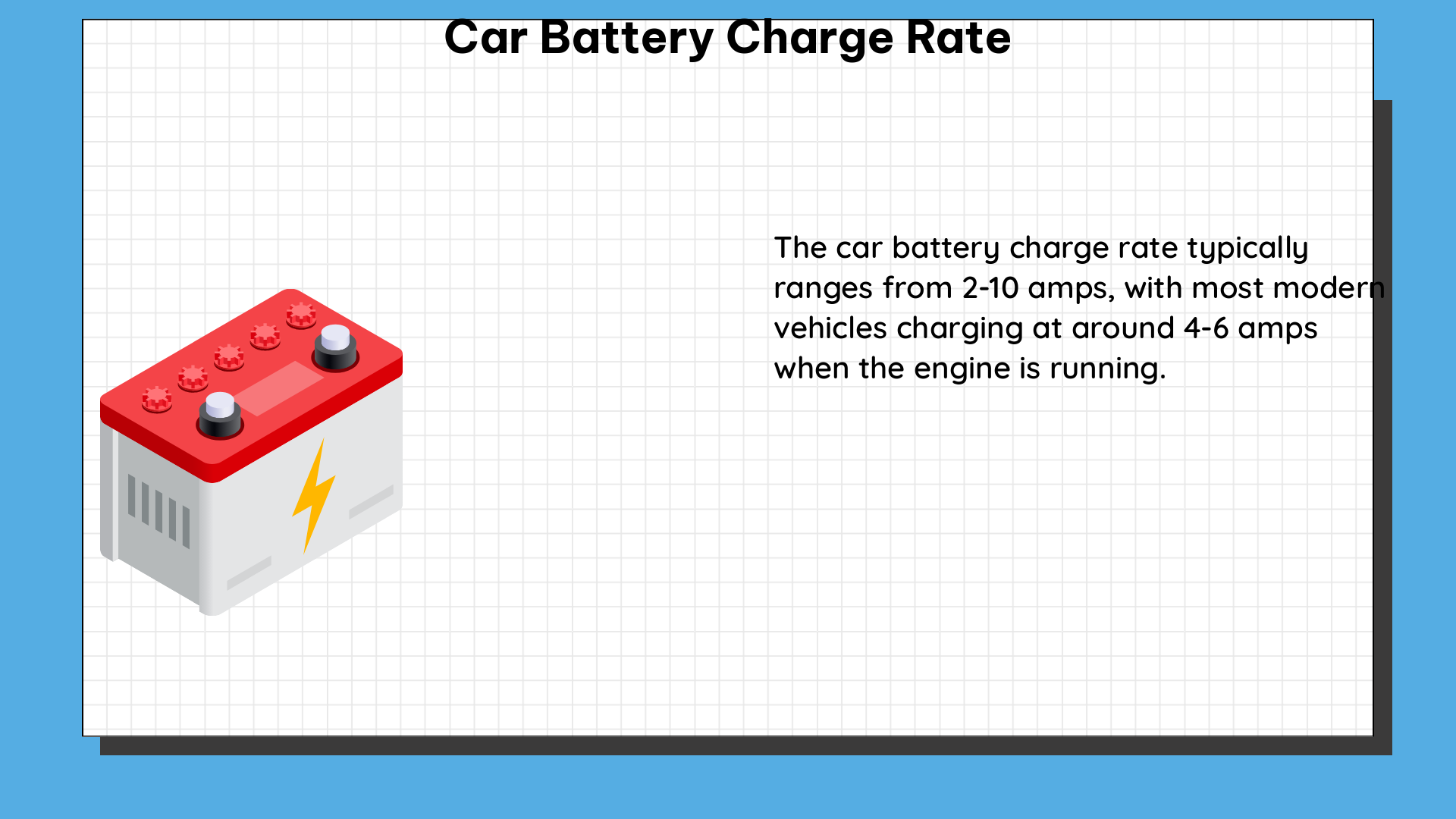The charge rate of a car battery is a crucial factor that determines the efficiency and longevity of your vehicle’s power source. Understanding the technical specifications and best practices for car battery charging is essential for maintaining a reliable and well-functioning automotive electrical system.
Understanding C-Rate: The Key to Efficient Charging
The charge rate of a car battery is typically measured in C-rate, which describes the current at which the battery will discharge in one hour. For example, a 1C discharge rate means the battery will discharge in one hour, while a 5C discharge rate indicates the battery will discharge in just 12 minutes. The higher the C-rate, the more power the battery can deliver, but it also means the battery will discharge faster.
When it comes to charging a 12V car battery with a capacity of 90Ah, the recommended maximum charge rate is typically C/4 to C/5, which translates to 22.5A to 18A. This charge rate ensures that the battery is charged efficiently without compromising its lifespan. However, it’s important to note that charging a battery at a high rate can negatively impact its longevity. For instance, charging a battery at a rate of 33A, which is the maximum output of a 400W charger, can potentially harm the battery’s overall performance and durability.
Technical Specifications: Factors Influencing Charge Rate

The charge rate of a car battery is influenced by several technical factors, including the battery’s capacity, the charging voltage, and the charging current. Understanding these specifications is crucial for ensuring optimal charging and maintaining the battery’s health.
Battery Capacity
The battery’s capacity, measured in Ampere-hours (Ah), determines the amount of energy it can store and the rate at which it can be charged. For a 90Ah car battery, a C/5 charge rate would require a charging current of 18A (90Ah / 5 = 18A).
Charging Voltage
The charging voltage for a 12V car battery is typically set at 14.4V. This voltage level ensures that the battery is charged efficiently without overcharging, which can lead to damage and reduced lifespan.
Charging Current
The charging current is determined by the battery’s capacity and the desired charge rate. For example, to charge a 90Ah battery at a C/5 rate, a charging current of 18A would be required (90Ah / 5 = 18A).
DIY Car Battery Charging: Best Practices
When it comes to DIY car battery charging, it’s essential to follow the manufacturer’s recommendations for the charging voltage and current. Using a charger with a higher output than recommended can damage the battery and reduce its lifespan. Additionally, it’s crucial to monitor the battery’s voltage during the charging process to ensure that it does not overcharge, as overcharging can lead to battery damage and reduced performance.
Charging Voltage Monitoring
Closely monitoring the battery’s voltage during the charging process is crucial to prevent overcharging. The charging voltage should be maintained at the recommended level of 14.4V for a 12V car battery. Exceeding this voltage can lead to battery damage and reduced lifespan.
Charging Current Adjustment
Adjusting the charging current based on the battery’s capacity and the desired charge rate is essential for efficient and safe charging. For a 90Ah car battery, a C/5 charge rate would require a charging current of 18A (90Ah / 5 = 18A).
Charging Time Calculation
The charging time can be calculated based on the battery’s capacity and the charging current. For a 90Ah battery charged at a C/5 rate (18A), the charging time would be approximately 5 hours (90Ah / 18A = 5 hours).
Conclusion
The charge rate of a car battery is a critical factor that must be carefully considered when charging your vehicle’s power source. By understanding the technical specifications, such as C-rate, battery capacity, charging voltage, and charging current, you can ensure that your car battery is charged efficiently and safely, maximizing its performance and longevity.
Remember, following the manufacturer’s recommendations and monitoring the battery’s voltage and current during the charging process are essential for maintaining a healthy and reliable car battery. With this comprehensive guide, you can confidently tackle DIY car battery charging and keep your vehicle’s electrical system running at its best.
References:
– What amount of current should I use to charge a 12V car battery?
– 8 Battery Metrics That Really Matter to Performance
– Lithium-Ion Battery Charging: Fundamentals, Challenges, and Solutions

The lambdageeks.com Core SME Team is a group of experienced subject matter experts from diverse scientific and technical fields including Physics, Chemistry, Technology,Electronics & Electrical Engineering, Automotive, Mechanical Engineering. Our team collaborates to create high-quality, well-researched articles on a wide range of science and technology topics for the lambdageeks.com website.
All Our Senior SME are having more than 7 Years of experience in the respective fields . They are either Working Industry Professionals or assocaited With different Universities. Refer Our Authors Page to get to know About our Core SMEs.